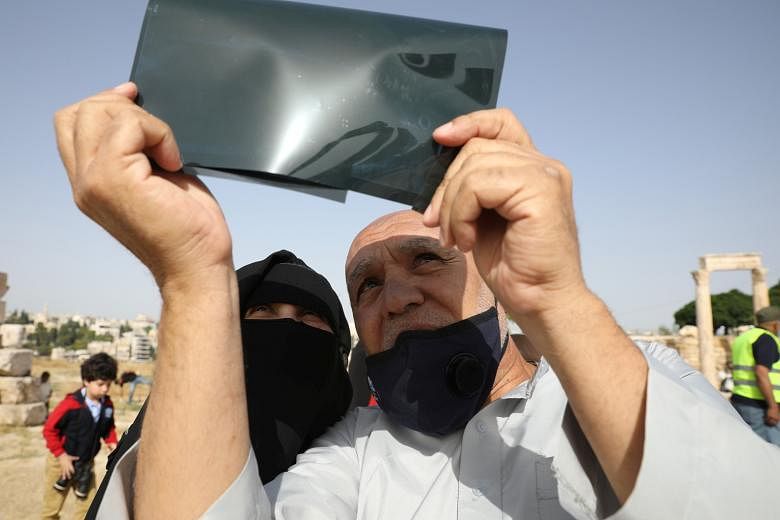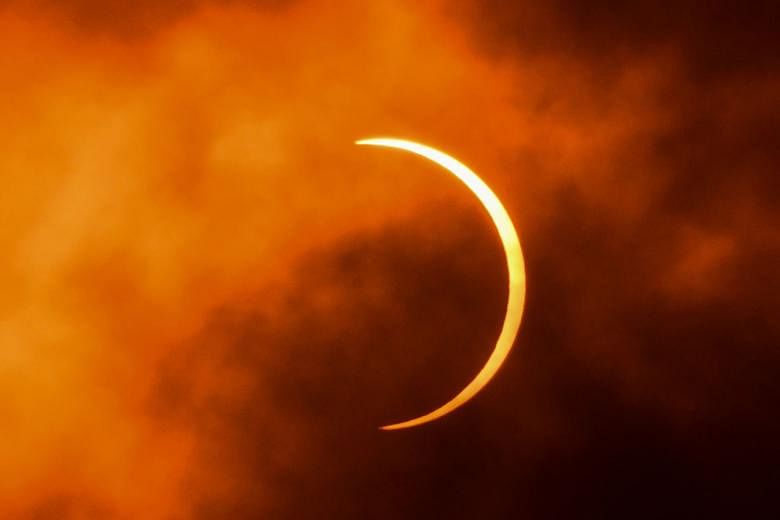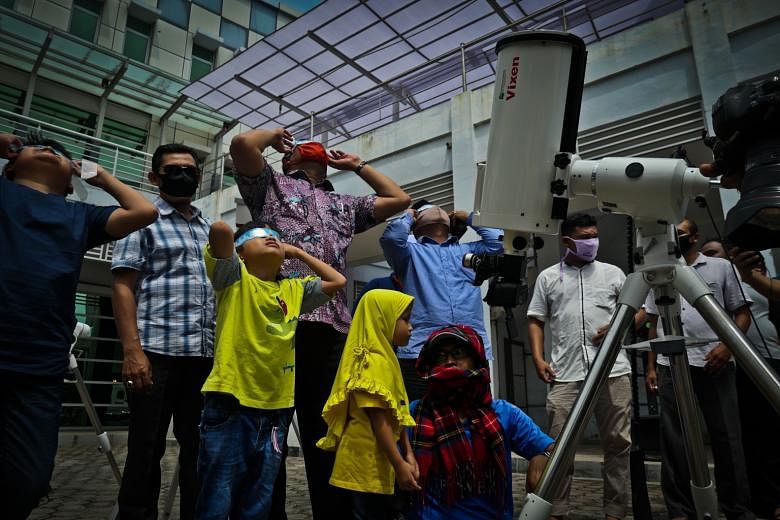NAIROBI • Skywatchers along a narrow band from West Africa to the Arabian Peninsula and Asia witnessed a dramatic "ring of fire" solar eclipse yesterday.
So-called annular eclipses occur when the Moon, passing between the Earth and the Sun, is not quite close enough to our planet to completely obscure sunlight, leaving a thin ring of the solar disc visible. These events happen every year or two, and can be seen only from a narrow pathway across the planet.
Yesterday's eclipse arrived on the northern hemisphere's longest day of the year - the summer solstice - when the Earth's north pole is tilted most directly towards the Sun.
The "ring of fire" was first visible in the north-eastern Republic of Congo from 5.56am local time, just after sunrise. It was the point of maximum duration, with the blackout lasting 1 minute and 22 seconds.
Arcing eastward across Africa and Asia, it reached "maximum eclipse" - with a perfect solar halo around the Moon - over Uttarakhand in India, near the Sino-Indian border at 12.10pm local time. It was more spectacular, but less long-lived: the exact alignment of the Earth, Moon and Sun was visible for only 38 seconds.
In Nairobi, Kenya, observers could see only a partial eclipse, as clouds blocked the sky for several seconds at the exact moment the Moon should have almost hidden the Sun.
Despite some disappointment, Ms Susan Murbana told Agence France-Presse: "It was very exciting because I think I'm so obsessed with eclipses.
"Today has been very kind to us in terms of the clouds. And we've been able to see most of it."
Ms Murbana set up the Travelling Telescope educational programme with her husband Chu.
In Chiayi, Taiwan, hundreds of skywatchers gathered in an open space, one of the locations in Asia where the annular eclipse was visible.

"I'm more than 50 years old, so it's great that I could see this," said retiree Zhuang Yuhui, 56, who had travelled to Chiayi from nearby Taichung city. "I'm beyond excited."
Solar eclipses on the summer solstice are rare. The last one was in June 2001. But a "ring of fire" eclipse that falls exactly in midsummer - whether in the northern or southern hemisphere - is even more uncommon.
AGENCE FRANCE-PRESSE, REUTERS




